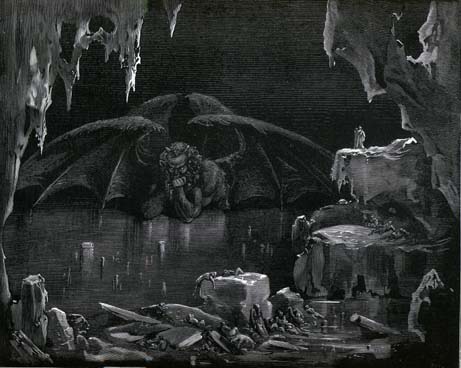Chapter 3: Ishtar and Gilgamesh, and The Death of Enkidu
Gilgamesh cleans up pretty well. His royal robes signify the most salient moment of urbane progression. And king's prowess attracts the admiration of Ishtar and that is dangerous. The story suggest that humans with charm and success may attract the sycophants and the seducers. We may view the temptation of Ishtar as a siren song, to flatter people of wealth and significance--"grant me your seed."
What is the fate of the lovers of ishtar? This is the precursor to Aristotle's notion of reversal and recognition that are characteristics of art. The thing that impresses me is that Gilgamesh knows the history of Ishtar and resists her seductive offer.
Ishtar rages and threatens to unleash the "Night of the Walking Dead" (87). She procures the Bull of Heaven to destroy Gilgamesh. The jilted lover can make your life miserable. Anu however has conditions for letting her have the Bull. And here we get a precursor to the story of Joseph in the Bible. The snorting Bull does do some serious damage and as allegory could be a number of natural disasters from earthquakes to plagues. Enkidu however seizes the Bull by the Horns and Gilgamesh kills it with his sword. They cut the bull's heart out and give it to shamash. And then they rest.
Ishtar is seriously dismayed and curses the warriors. Enkidu throws meat at her. the seems to be a kind of gender based civil war; this is uncertain but we do get the feeling that the warriors are guilty of hubris. Someone must pay for disrespecting the gods--Enkidu dies, but on his death bed he curses the harlot. Shamash discusses the misconceptions Enkidu voices. Regret is not justified as think of the splendors of eating and drinking like gods. rest in royal bed and have folks kiss your feet. And to top it off everyone will be required to lament and wail. And when you are finally dead, Gilgamesh will let his hair grow long and strange, wear a lion's pelt and wander in the desert.
The Queen of darkness, a palace, a road, no return. Here we have reference to bats. People become bat-like when they die. This image of masters and inhabitants of the underworld with the wings of bats becomes popular. The image below is painted by Gustave Dore in the 19th century. However, bats are not so nafarious as we might believe. Check out this photograph of a Pallid bat my wife is holding (she's a bat biologist).
